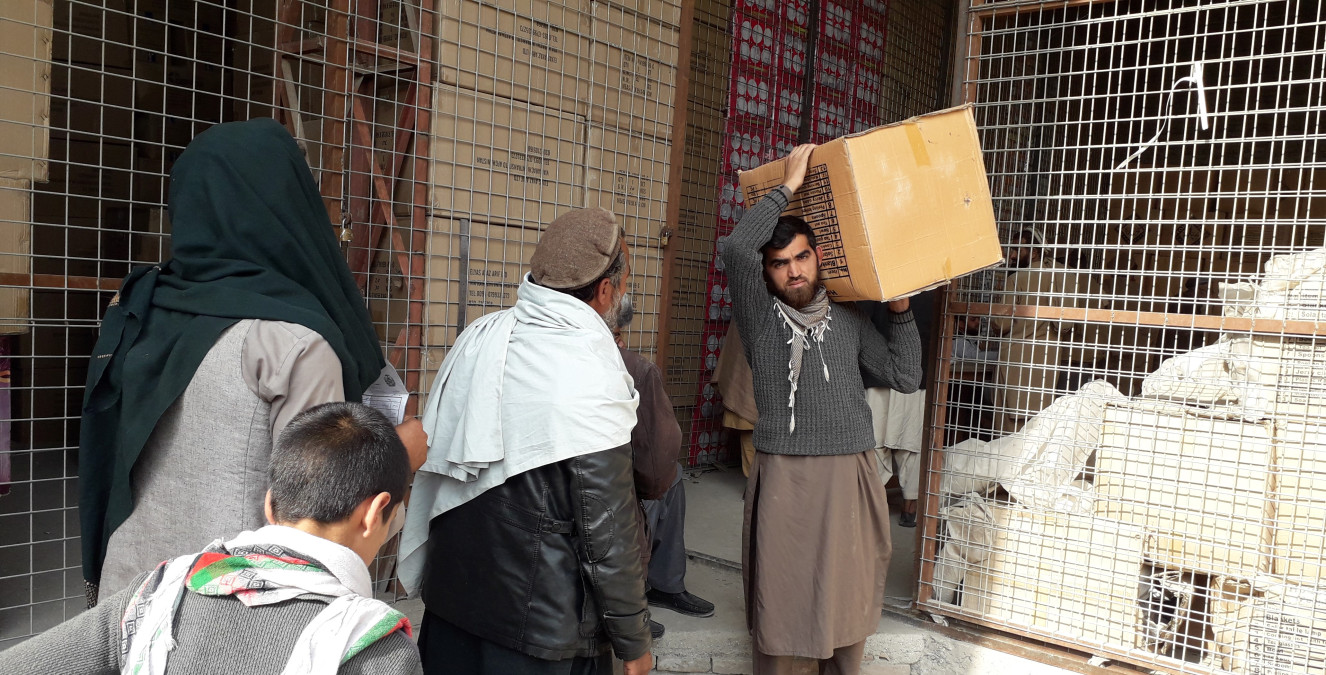Easing the burden of displacement in Afghanistan
Published: Dec 17, 2019 Reading time: 3 minutes Share: Share an articleWhen fighting broke out between armed opposition groups and Afghan National Security Forces in southern Zabul province, in Afghanistan, Omid Ashirin and his 15-member family faced a choice: stay and take their chances or leave and seek shelter. His decision to move to Paktia province saved his family, but it also kicked off a series of new challenges that People in Need (PIN) is helping him to address.

For Omid, the calculus to flee was simple. “The ongoing conflict in our district forced us to come to Gardiz, the capital of Paktia province,” he says. But the relocation carried its own consequences. “Because of the fighting, we only managed to bring some clothes. We couldn’t bring anything else with us.”
Then, after hearing about a program to distribute aid to internally displaced people, Omid visited the provincial office for refugees to add his name to the list of those seeking assistance. It was at this point that his fortunes began to change.
“This is the first aid I have received”
In November, Omid was selected by PIN to receive a winterization clothing kit including shawls, shoes, sweaters, hats, gloves, and socks. “This is the first aid I have received,” says Omid. “I haven’t received assistance from any other organization.”
Omid describes the burdens of displacement this way: “We don’t have many clothes or food, such as flour. Although we are a big family, just two of us are working as day laborers.” One of Omid’s sons has a zarange (a type of local taxi that is also used for deliveries) and another son has found work in a brick factory. “There is no work nowadays so they can barely find anything to do,” he says.
For these and other reasons, Omid appreciates the aid he has received, noting that “it’s very useful and will help us a lot.” Omid is also grateful for the welcome his family has received from the local community in Gardiz. “The people living here are good people; they are supportive and helpful.”
When hostilities end, Omid and his family will return home. But for now, they’re staying put. Fighting in his village continues and it remains too dangerous to return. “We cannot go back now," he says.
Support to thousands
The support Omid and his family received was made possible with funding from USAID’s Office of US Foreign Disaster Assistance and a PIN-implemented 16-month project, “Ensuring access to basic, life-saving assistance for the most vulnerable individuals affected by conflict and natural disaster in Afghanistan.” This project provided financial assistance to 3,978 households, in addition to providing items such as blankets, torches, lamps, cooking equipment, sleeping mats, and clothing to another 3,000 households. An additional 779 families were given the type of winterization clothing kits that Omid received.
In total, the program supported more than 54,000 people in 12 districts of Paktia, Khost, Logar, and Nangarhar provinces.
Future needs
As 2019 draws to a close, humanitarian needs continue to grow in Afghanistan due to ongoing violence, natural disasters, internal displacement, food insecurity, and the onset of winter. According to the United Nations Office for the Coordination of Humanitarian Affairs (OCHA), one third of Afghanistan’s population is suffering acute food insecurity and more than six million people are in need of aid. This year alone, some 380,000 people were displaced by conflict and another 300,000 were affected by natural disasters.*Names of people have been changed in the article for security reasons
*Names of people have been changed in the article for security reasons



